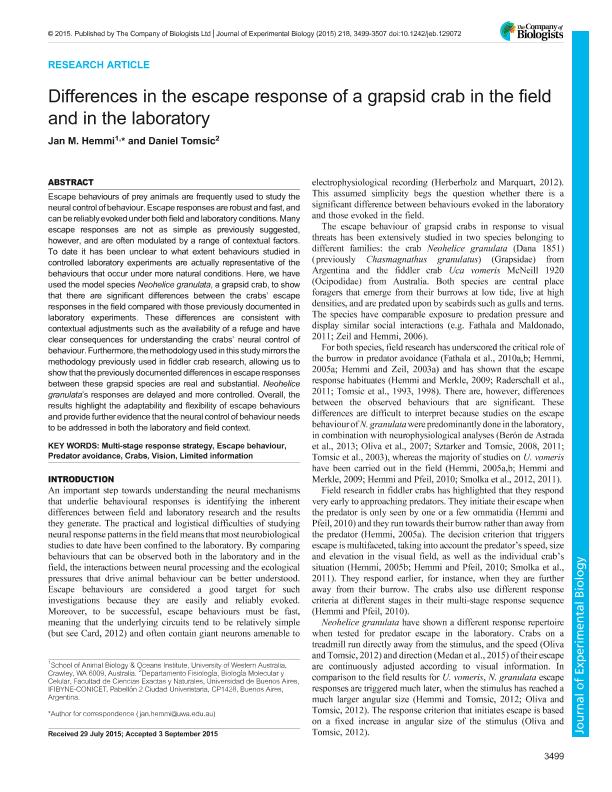Artículo
Differences in the escape response of a grapsid crab in the field and in the laboratory
Fecha de publicación:
09/2015
Editorial:
Company of Biologists
Revista:
Journal of Experimental Biology
ISSN:
0022-0949
Idioma:
Inglés
Tipo de recurso:
Artículo publicado
Clasificación temática:
Resumen
Escape behaviours of prey animals are frequently used to study the neural control of behaviour. Escape responses are robust, fast, and can be reliably evoked under both field and laboratory conditions. Many escape responses are not as simple as previously suggested, however, and are often modulated by a range of contextual factors. To date it has been unclear to what extent behaviours studied in controlled laboratory experiments are actually representative of the behaviours that occur under more natural conditions. Here we have used the model species, Neohelice granulata, a grapsid crab, to show that there are significant differences between the crabs' escape responses in the field compared to those previously documented in laboratory experiments. These differences are consistent with contextual adjustments such as the availability of a refuge and have clear consequences for understanding the crabs' neural control of behaviour. Furthermore, the methodology used in this study mirrors the methodology previously used in fiddler crab research, allowing us to show that the previously documented differences in escape responses between these grapsid species are real and substantial. Neohelice's responses are delayed and more controlled. Overall, the results highlight the adaptability and flexibility of escape behaviours and provide further evidence that the neural control of behaviour needs to be address in both the laboratory and field context.
Palabras clave:
Behavior
,
Escape
,
Vision
Archivos asociados
Licencia
Identificadores
Colecciones
Articulos(IFIBYNE)
Articulos de INST.DE FISIOL., BIOL.MOLECULAR Y NEUROCIENCIAS
Articulos de INST.DE FISIOL., BIOL.MOLECULAR Y NEUROCIENCIAS
Citación
Hemmi, J. M.; Tomsic, Daniel; Differences in the escape response of a grapsid crab in the field and in the laboratory; Company of Biologists; Journal of Experimental Biology; 218; 21; 9-2015; 3499-3507
Compartir
Altmétricas




